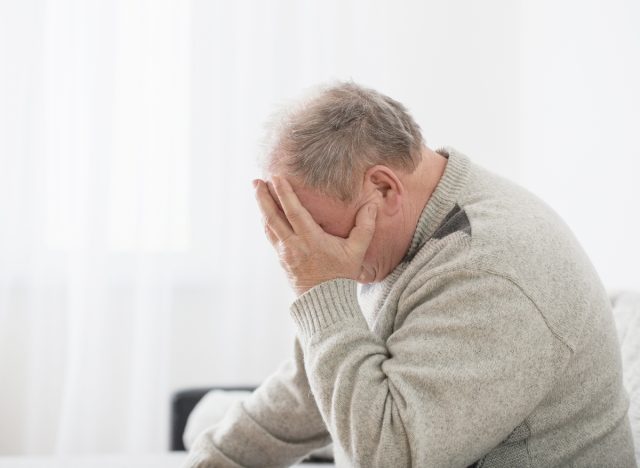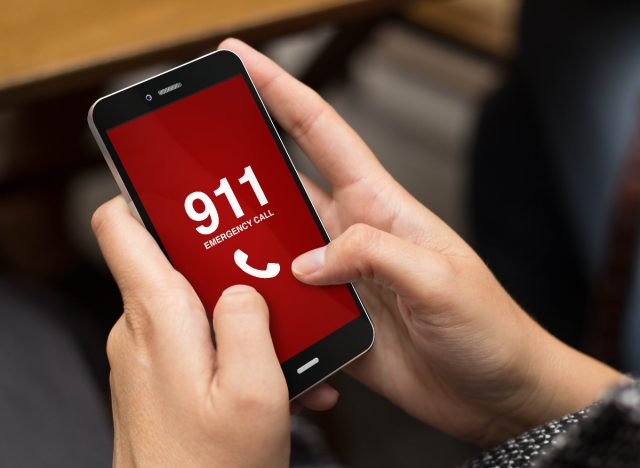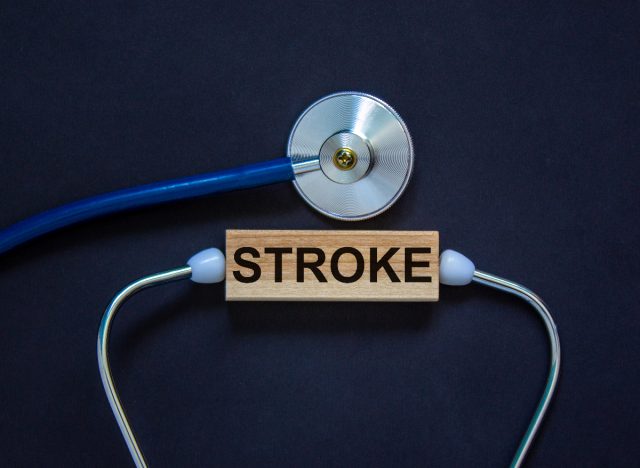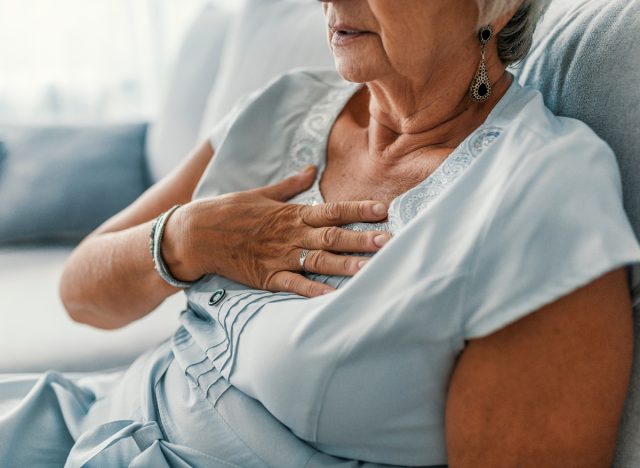Here’s How To Recognize the Signs of a Stroke in a Loved One, MD Says

To say your parents and loved ones are very special to you is an understatement. You’d likely do anything for them, which is why it’s so important to know the signs of a stroke and how you can help them, should the need arise. Knowledge is everything when it comes to a medical emergency, and can you save the life or help prevent serious damage to a loved one. Eat This, Not That! reached out to Dr. Mike Bohl, MD, MPH, ALM, Director of Medical Content & Education at Ro, to learn how to recognize the signs of a stroke in someone. Read on to learn more, and next up, don’t miss The 6 Best Exercises for Strong and Toned Arms in 2022, Trainer Says.
FAST is an acronym commonly used as a reference to pinpoint symptoms of a stroke

Dr. Bohl explains, “Strokes can be tricky, because the exact symptoms that somebody having a stroke experiences depend on the part of their brain that’s affected.” That being said, he adds, “There are certain parts of the brain that are more commonly affected than others and—as a result—there are certain symptoms that show up more often than others.”
FAST is an acronym commonly used as a reference for identifying stroke symptoms. The letters represent Face (an uneven look or drooping on one side of the face); Arms (a weak, paralyzed, or numb arm or leg); Speech (listen for trouble speaking or a hard time understanding speech), and Time (make sure you call 9-1-1 as soon as possible). The acronym BE FAST is also commonly used, with the B representing Balance (dizziness, inability to balance, confusion, or a sudden headache); the E is for Eyes (look for a sudden loss or change of vision). “A stroke typically affects one side of the body, since each half of the brain controls half of the body,” Dr. Bohl advises.
Related: Best Eating Habits To Reduce Stroke Risk, Say Dietitians
Calling 9-1-1 immediately is imperative—then, make sure your loved one is okay

If you happen to notice any of these potential stroke indicators, call 9-1-1 immediately. Next, make certain the person is okay. If they are standing, get them to lie or sit down to prevent them from falling. Be certain they absolutely do not eat, drink, or take medications, since their ability to swallow can be compromised, putting them at risk of choking.
If you’re trained to perform CPR, do so if they become unconscious and stop breathing. If possible, it’s very helpful to pull together any information from the victim if they can still communicate that may be useful for the emergency medical team. This info includes when symptoms began, pertinent medical information, and any current medications or allergies of the stroke victim.
Related: Sure Signs You’re Having a Stroke
Time is critical: Each minute translates to the loss of more brain cells

Time is critical when someone endures a stroke. Each minute translates to the loss of more brain cells. According to Dr. Bohl, “Whether a full recovery is possible partially depends on the part of the brain that was affected, but it can take months or even years to [regain] functionality. When somebody experiences an ischemic stroke (the type of stroke that occurs when there is a lack of blood flow), it’s important for patients to get the necessary medication within 3–4.5 hours of when the stroke began, so hospitals strive to give the medication as soon as possible and within 60 minutes of the patient’s arrival.”
Someone can experience a stroke at any age, but the risk of having one increases as you get older. According to the Centers for Disease Control and Prevention (CDC), 38% of hospitalized stroke patients are younger than 65 years old, which means the remaining 62% are 65 years of age and higher.
The difference between a heart attack and a stroke

There’s a type of mini-stroke called transient ischemic attack (TIA). “The symptoms of a TIA only last for a few minutes or hours and resolve within 24 hours,” Dr. Bohl explains. Experiencing a TIA puts someone at greater risk of enduring a stroke.
In addition to breaking down how to recognize the signs of a stroke, Dr. Bohl tells us the difference between a heart attack and a stroke. Heart attacks and ischemic strokes occur when blood flow is lacking. Actual bleeding in the brain is known as a hemorrhagic stroke. Dr. Bohl further explains, “During a heart attack, there is a lack of blood flow to the heart, while during a stroke, there is a lack of blood flow to the brain. The main cause of both is atherosclerosis—the buildup of plaques inside of the arteries,” adding, “Atherosclerosis narrows the arteries, resulting in reduced blood flow, and it can also cause blood clots to form.”
The difference between a stroke and a heart attack depends on where atherosclerosis occurs in your body and where the clot forms. Dr. Bohl adds, “When you have plaque buildup in the coronary arteries (the arteries that supply the heart), you are at risk of a heart attack. When you have plaque buildup in the carotid arteries or other arteries in the neck and brain, you are at risk of stroke.”
It’s imperative that you know how to recognize the signs of a stroke and what to do so you can help your loved one in a potential health crisis.








